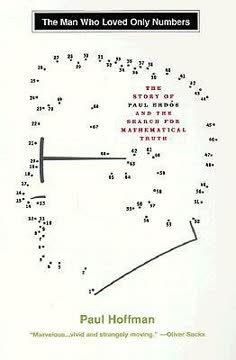Key Takeaways
1. Paul Erdos: A Life Dedicated Solely to Mathematics.
There'll be plenty of time to rest in the grave.
An ascetic life. Paul Erdos structured his entire existence around maximizing time for mathematical discovery. He had no job, home, spouse, or hobbies, living out of a suitcase and relying on colleagues for lodging and care. This singular focus allowed him to become the most prolific mathematician in history, publishing 1,475 papers.
Constant motion. Erdos crisscrossed four continents relentlessly, moving from one mathematician's doorstep to the next, declaring, "My brain is open." His motto was "Another roof, another proof," reflecting his nomadic lifestyle driven purely by the search for mathematical truth. He was fueled by caffeine and amphetamines, working up to nineteen hours a day.
Disdain for possessions. Erdos saw private property as a "nuisance," giving away most of the money he received from stipends and prizes to family, colleagues, and strangers. His only valued possessions were his mathematical notebooks, which he carried everywhere to record insights, even at social events.
2. Mathematics as a Quest for Eternal Truth and Beauty ("The Book").
You don't have to believe in God, but you should believe in the Book.
The SF's Book. Erdos believed mathematical truths existed independently, residing in the mind of the "Supreme Fascist" (SF), or God, in a transfinite "Book" containing all perfect proofs. Mathematicians, in his view, merely rediscovered these truths, striving for proofs that were elegant and beautiful enough to be "straight from the Book."
Beauty in patterns. For Erdos and his colleagues, mathematics was not just reckoning but an art form. They sought patterns and structures that were beautiful, unexpected, and inevitable. G.H. Hardy famously stated, "Beauty is the first test: there is no permanent place in the world for ugly mathematics."
Transcendent reality. Mathematical objects like points, lines, and numbers were seen as idealized entities existing outside physical reality. The properties of numbers, like primes, were considered immutable and universal, existing independently of human thought or culture.
3. The Power of Collaboration in Mathematical Discovery.
He was the problem poser par excellence. His ability to formulate problems of any level of difficulty is legendary.
A vast network. Erdos collaborated with 485 different people, more than any other mathematician, creating the concept of "Erdos numbers" to track connections. He stimulated research by sharing problems and insights, often working with multiple people simultaneously like a chess grandmaster playing simultaneous games.
Mutual inspiration. Collaboration was central to Erdos's method, providing intellectual stimulation and pushing boundaries. He sought out new, young collaborators, ending sessions with "We'll continue tomorrow if I live," emphasizing the urgency of discovery.
Problem posing. Erdos's genius lay not just in solving problems but in formulating them. He had a unique ability to identify questions that were "always just right," challenging enough to be significant but not impossibly difficult, thereby launching many careers in mathematics.
4. Erdos's Unique Language and Worldview.
Louis the Fourteenth said, 'I am the state'; Trotsky could have said, 'I am society'; and I say, 'I am reality.'
A private vocabulary. Erdos developed a unique language, Erdosese, partly as a code during politically sensitive times in Hungary and partly reflecting his distinct perspective. Key terms included:
- SF: Supreme Fascist (God)
- Epsilon: Small child
- Bosses: Women
- Slaves: Men
- Poison: Alcohol
- Noise: Music
- Sam: United States
- Joe: Soviet Union
Defiance and humor. His language often inverted conventional meanings or applied terms like "Fascist" humorously to anything he disliked, from cats to political systems. This linguistic quirk was contagious among his colleagues and reflected his fearless defiance of authority.
A unique reality. Erdos's friends noted his childlike tendency to make his reality supersede others'. He was often oblivious to social norms or practical matters, fully immersed in his mathematical world, which he declared to be "reality."
5. Mathematics as an Anchor in a Tumultuous World.
The game of life is to keep the SF's score low.
Surviving history. Erdos's life spanned major 20th-century upheavals, including two world wars, the Holocaust (which claimed many relatives), and the Cold War. Mathematics served as his constant refuge and anchor amidst political turmoil and personal tragedy.
Defying authority. He fearlessly challenged governments, from the Fascist regime in Hungary to the U.S. Immigration Service during the McCarthy era, which denied him reentry for years. His mathematical reputation often served as his shield and passport.
Loss and resilience. The death of his mother in 1971 deeply affected him, leading to depression and increased reliance on stimulants. However, he channeled his grief into even more intense mathematical work, viewing it as a "strong fortress" against suffering and a path to immortality.
6. The Deep Mystery and Beauty of Prime Numbers.
Babies can ask questions that grown men can't answer.
Building blocks. Prime numbers (divisible only by 1 and themselves) are the atoms of integers, every number being a prime or a product of primes. Euclid proved their infinite supply over 2,300 years ago with an elegant proof considered "straight from the Book."
Enduring mysteries. Despite centuries of study, basic questions about primes remain unanswered, such as Goldbach's conjecture (every even number > 2 is sum of two primes) and the twin prime conjecture (infinite pairs of primes differing by 2). These simple-sounding problems have resisted the sharpest minds.
Unexpected connections. Primes, seemingly isolated, have been found to connect to diverse areas:
- Cryptography (secure codes)
- Probability theory (distribution patterns)
- Growth/decay constant 'e' (Prime Number Theorem)
- Even extraterrestrial communication (Carl Sagan's Contact)
7. Exploring the Infinite: Beyond Counting.
In a way, mathematics is the only infinite human activity.
Different sizes of infinity. Georg Cantor startled the mathematical world by proving that infinity comes in different sizes. The set of counting numbers (1, 2, 3...) is countably infinite (aleph-null), but the set of real numbers (decimals) is uncountably infinite (aleph-one), a larger infinity.
The Continuum Hypothesis. Cantor conjectured there was no infinity between aleph-null and aleph-one, a problem Hilbert made number one on his 1900 list. Paul Cohen later proved this hypothesis is undecidable within standard mathematical axioms, meaning it can be assumed true or false without contradiction.
Transfinite realm. Erdos embraced Cantor's transfinite numbers, extending finite combinatorial problems into these larger infinities. He contributed to the theory of "inaccessible cardinals," infinite sets vastly larger than the reals, finding a rich landscape for discovery.
8. The Nature of Proof and Mathematical Certainty.
Mathematical truth is immutable; it lies outside physical reality . . . . To see his faith was to be given faith.
The power of proof. Unlike other sciences, mathematics offers certainty through logical proof, conclusions following syllogistically from axioms. This rigor was a core appeal for mathematicians like Erdos, providing a stable world.
Challenges to certainty. The foundations of mathematics faced crises:
- Non-Euclidean geometries (challenging spatial intuition)
- Russell's paradox (undermining set theory)
- Godel's incompleteness theorems (showing systems are incomplete and cannot prove their own consistency)
Intuition vs. rigor. Erdos's intuition was often uncanny, but even he could be fooled, as by the Monty Hall problem, which clashed violently with his initial probabilistic intuition. While proof is paramount, intuition guides the search for truth.
9. Unexpected Connections Between Pure Math and the Real World.
No matter how determinedly its practitioners ignore the world, they consistently produce the best tools for understanding it.
Hardy's defiance. G.H. Hardy famously prided himself on doing mathematics with no practical applications, particularly number theory, believing it immune to military use. He was proven wrong when primes became essential for modern cryptography.
Unforeseen utility. Concepts developed for pure intellectual pursuit often find surprising real-world applications:
- Euclidean geometry (architecture, engineering)
- Non-Euclidean geometry (Einstein's relativity)
- Unit fractions (ancient Egyptian accounting)
- Fibonacci numbers (design, nature)
- Graph theory (networks, scheduling)
Worst-case analysis. Ron Graham's work in "worst-case analysis," initially for military and space applications, found broad utility in scheduling and optimization problems across industries, demonstrating how abstract combinatorial problems relate to practical efficiency.
10. The Allure of Unsolved Problems and Conjectures.
Problems worthy of attack, Prove their worth by fighting back.
Contracts on problems. Erdos spurred research by offering monetary rewards for solutions to problems he couldn't solve, ranging from $10 to $3,000. These "contracts" incentivized mathematicians and highlighted significant open questions.
Famous challenges. The book highlights several enduring unsolved problems:
- Goldbach's Conjecture (sum of two primes)
- Twin Prime Conjecture (infinite pairs differing by 2)
- Existence of odd perfect numbers
- The Happy End Problem (convex polygons from points)
- The Continuum Hypothesis (undecidable)
Fermat's Last Theorem. This simple-sounding conjecture (no whole number solutions for x^n + y^n = z^n when n > 2) famously resisted proof for over 350 years until Andrew Wiles's complex solution, demonstrating the depth hidden within simple statements.
11. Nurturing Young Mathematical Talent.
He knew better than you yourself knew what you were capable of.
Seeking epsilons. Erdos actively sought out child prodigies and young mathematicians worldwide, viewing them as future collaborators and carriers of the mathematical torch. He challenged them with problems appropriate to their level, fostering their growth.
Mentorship and encouragement. He nurtured talent by treating young students as professional colleagues, discussing problems seriously and providing encouragement. His belief in their potential gave many the confidence to pursue mathematical research.
A lasting impact. Many of Erdos's young proteges grew up to become leading mathematicians, continuing his legacy of problem-solving and collaboration. His dedication to mentoring ensured the continuation of the mathematical quest across generations.
12. The Complex Relationship Between Genius and Eccentricity.
We mathematicians are all a little bit crazy.
Beyond the norm. Erdos's extreme focus, social awkwardness, unique language, and peculiar habits (like handwashing or pacing) set him apart. He embodied the stereotype of the eccentric genius, often oblivious to conventional norms.
Mathematics as refuge. For some, like Erdos, mathematics provided a structured, logical world that offered refuge from the complexities and uncertainties of everyday life and personal struggles. This intense focus could sometimes manifest as social or emotional difficulties.
The "crazy" spectrum. The book touches on mathematicians who experienced severe mental illness (Cantor, Godel, Nash, Sidon) or even violence (Kaczynski), suggesting a potential link between the intense abstract pursuit and psychological vulnerability, though many mathematicians remain perfectly sane.
Last updated:
Review Summary
The Man Who Loved Only Numbers is a captivating biography of Paul Erdős, a prolific Hungarian mathematician. Readers praise Hoffman's engaging writing style, which makes complex mathematical concepts accessible to non-experts. The book explores Erdős' eccentric lifestyle, his profound impact on mathematics, and his collaborative approach. Many reviewers appreciate the balance between mathematical explanations and personal anecdotes. Some criticize the tangential stories about other mathematicians, while others find these additions enriching. Overall, the book is lauded for its insight into the world of mathematics and the unique character of Erdős.
Similar Books
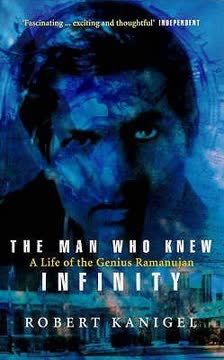

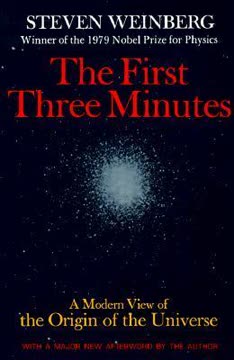

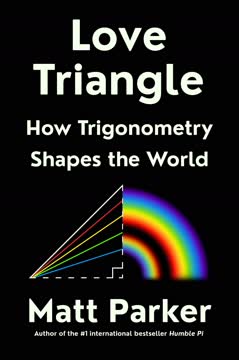
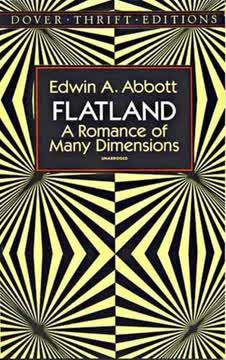
Download PDF
Download EPUB
.epub digital book format is ideal for reading ebooks on phones, tablets, and e-readers.
